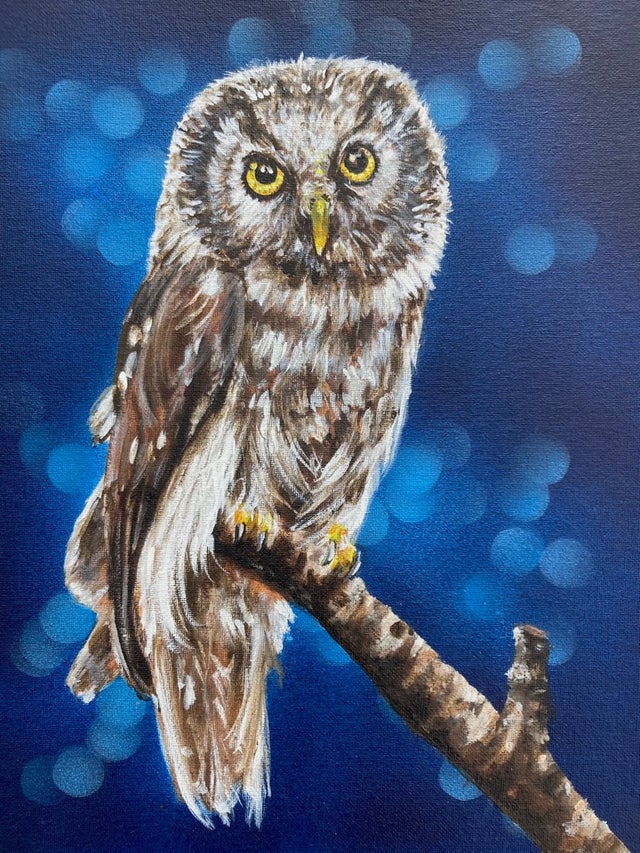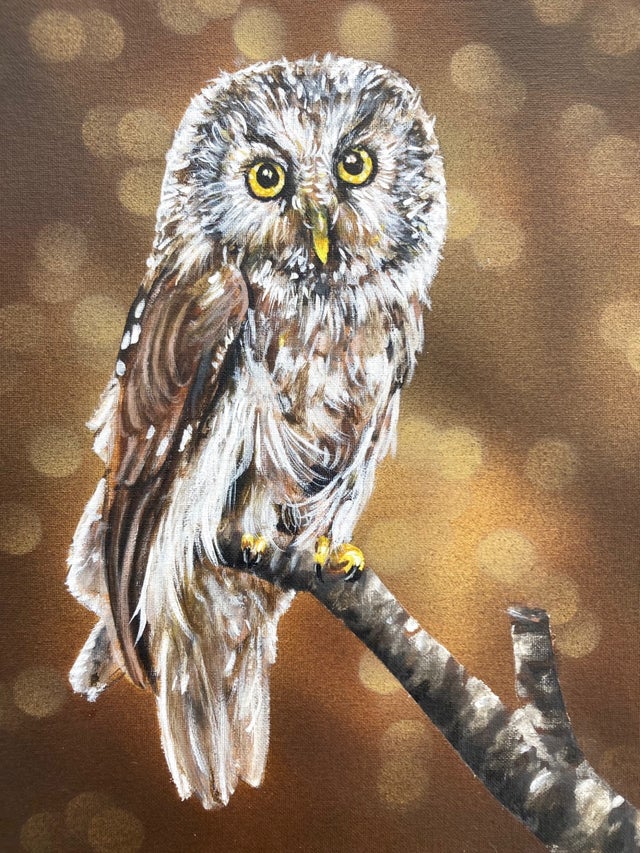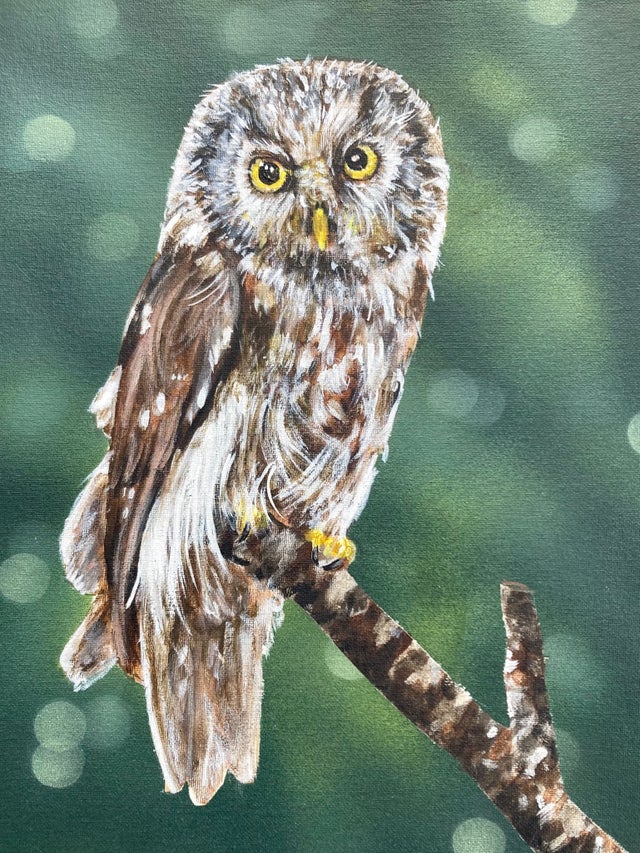Saw-Whet Owl
The Saw-Whet Owl is a small owl found throughout the forests of North America and Canada. With an oversized head and huge, bright yellow eyes, it has a very cute and endearing appearance. It is a nocturnal creature and not easily seen but readily heard. It has a very distinctive too-too-too call that the males give off for hours on end during mating season. The bird was named for this song, which reminded settlers of the sound of a whetstone sharpening a saw.
The Saw-Whet Owl hunts primarily at night, and it’s diet consists mainly of small varieties of rodents, although it will also eat insects and small birds. Likewise, the Saw-Whet is also prey for larger species of owls and raptors.
The female lays between 5-7 eggs and is entirely in charge of incubation and guarding of the nest, while the male brings food to her throughout this time. The young hatch in about a month’s time, and leave the nest in about another month, although they still remain dependent on their parents for food for an additional 4-5 weeks. Saw-Whet Owls are non-monogamous and may pair with more than one mate during the breeding season; between March and July. They are quite a common and abundant species, with an estimated population of over 2 million.
The Saw-Whet Owl hunts primarily at night, and it’s diet consists mainly of small varieties of rodents, although it will also eat insects and small birds. Likewise, the Saw-Whet is also prey for larger species of owls and raptors.
The female lays between 5-7 eggs and is entirely in charge of incubation and guarding of the nest, while the male brings food to her throughout this time. The young hatch in about a month’s time, and leave the nest in about another month, although they still remain dependent on their parents for food for an additional 4-5 weeks. Saw-Whet Owls are non-monogamous and may pair with more than one mate during the breeding season; between March and July. They are quite a common and abundant species, with an estimated population of over 2 million.


